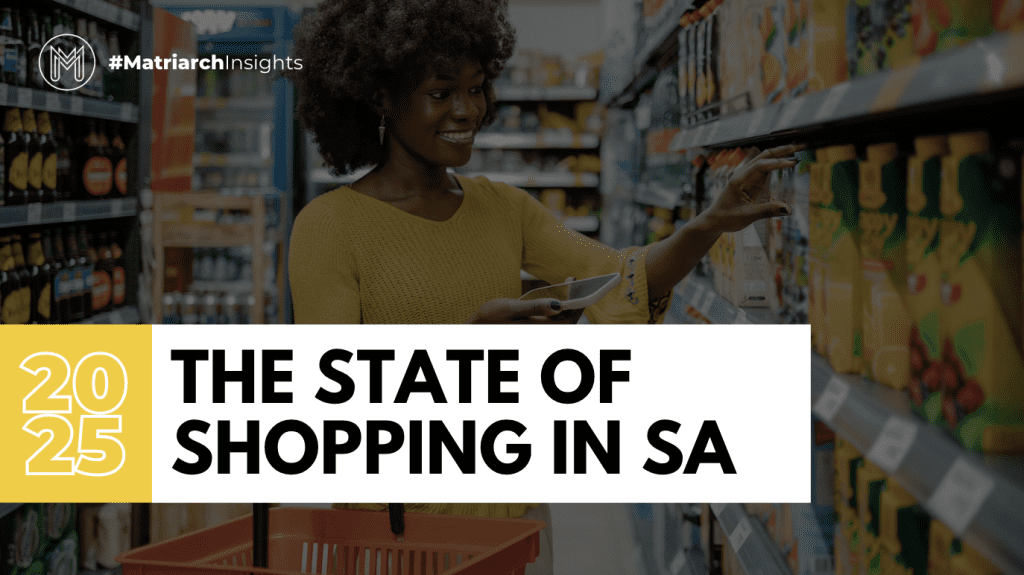
South Africa’s retail sector is booming despite economic challenges. From on-demand grocery apps like Sixty60 to the rise of premium gourmet outlets and the arrival of global giants such as Amazon and Shein, here are the shopping trends shaping 2025.
South Africa’s retail landscape is in flux. From rapid grocery delivery to premium gourmet formats and new international players, the way we shop is evolving fast. These shifts are not only economic but cultural – shaped by convenience, quality, and a demand for value.
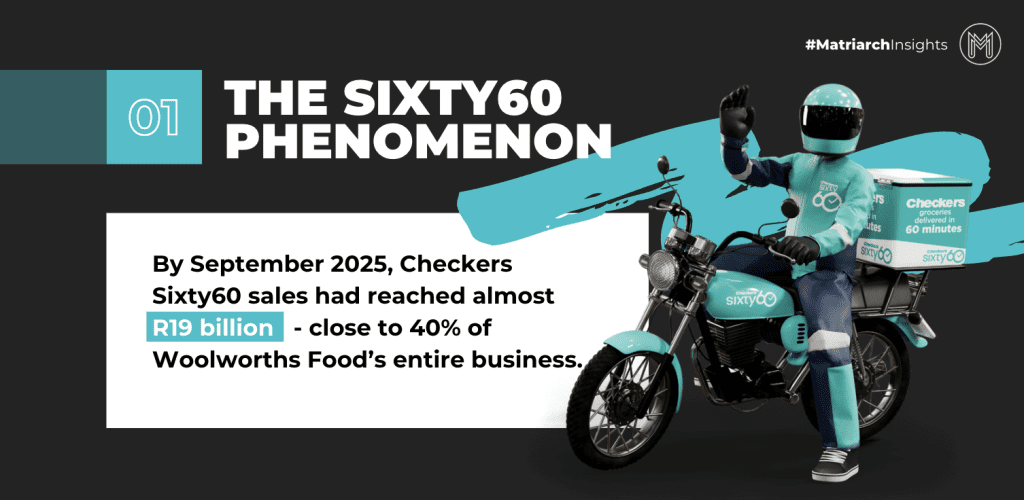
The Sixty60 Phenomenon
If there’s one player defining 2025, it’s Checkers Sixty60.
- By September 2025, its sales had reached almost R19 billion – close to 40% of Woolworths Food’s entire business.
- Analysts note that Sixty60’s turnover is now worth nearly the combined market values of Pick n Pay and SPAR.
- Shoprite has reported that Sixty60 is growing at 47% year-on-year, outpacing all competitors.
For consumers, this is about time saved and effort removed. In a country where daily commutes and queues can consume hours, the promise of “groceries in 60 minutes” has reset expectations of convenience.
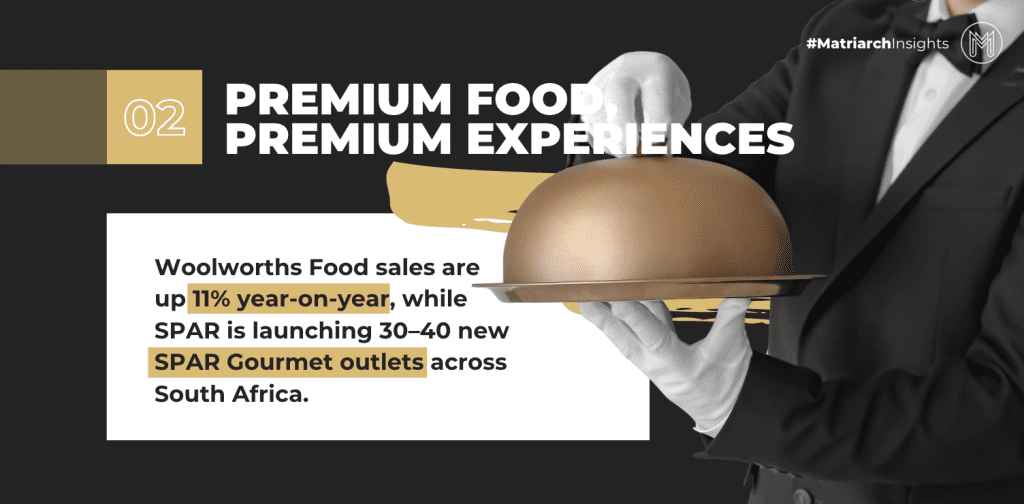
Premium Food, Premium Experiences
While on-demand is booming, premium shopping is also holding its ground.
- Woolworths Food continues to be the jewel in the Woolworths crown, with food sales up 11% year-on-year, even as its fashion and home divisions struggle.
- SPAR is doubling down on the premium market with plans to open 30-40 SPAR Gourmet outlets across urban centres (Reuters). These will offer coffee bars, bakeries, and more upmarket ranges, targeting affluent consumers who see grocery shopping as part of a lifestyle, not a chore.
This duality – fast, functional delivery versus slow, curated experiences – shows how diverse South African consumer needs really are.
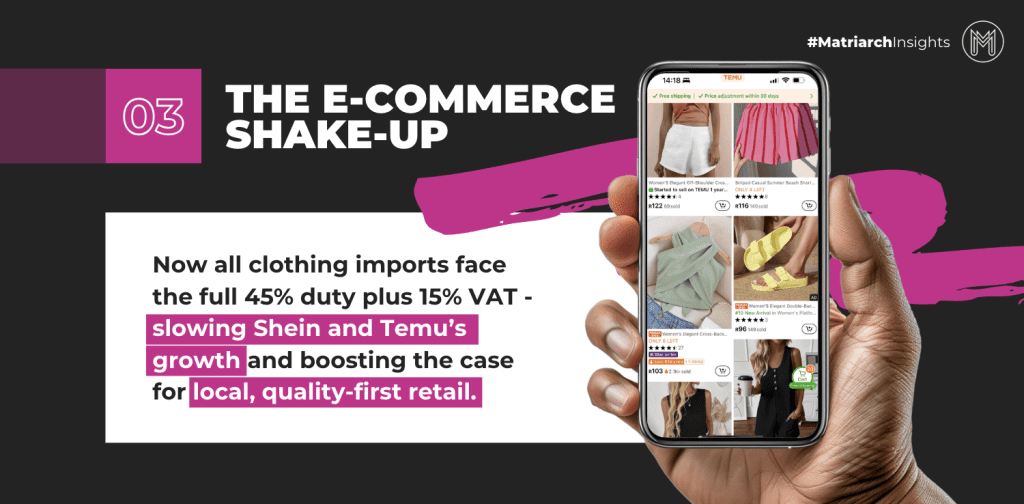
The E-Commerce Shake-Up
Global e-commerce players have made serious inroads into the South African market – but their momentum is now being tested by new tariff rules.
- Amazon continues to expand locally into non-perishable groceries, pet food, and health supplements.
- Shein and Temu disrupted fashion retail, reportedly achieving around R7.3 billion in clothing, textile, footwear, and leather sales in 2024 – more than 37% of online sales in that category.
- Their competitive edge relied heavily on a tariff loophole: until mid-2024, small parcels under about R500 were charged a flat 20% duty with no VAT. This allowed ultra-cheap clothing imports to undercut local retailers.
- Since 1 July 2024, that concession has been removed. All clothing imports now attract the full 45% duty plus 15% VAT, regardless of parcel value.
- Early signs suggest the changes are biting: Shein’s growth has slowed, some items are now significantly more expensive, and consumers are voicing frustration.
For local retailers and manufacturers, this shift could be a turning point. With cheap import strategies becoming less sustainable, quality, authenticity, and “Made in South Africa” stories are gaining renewed importance.
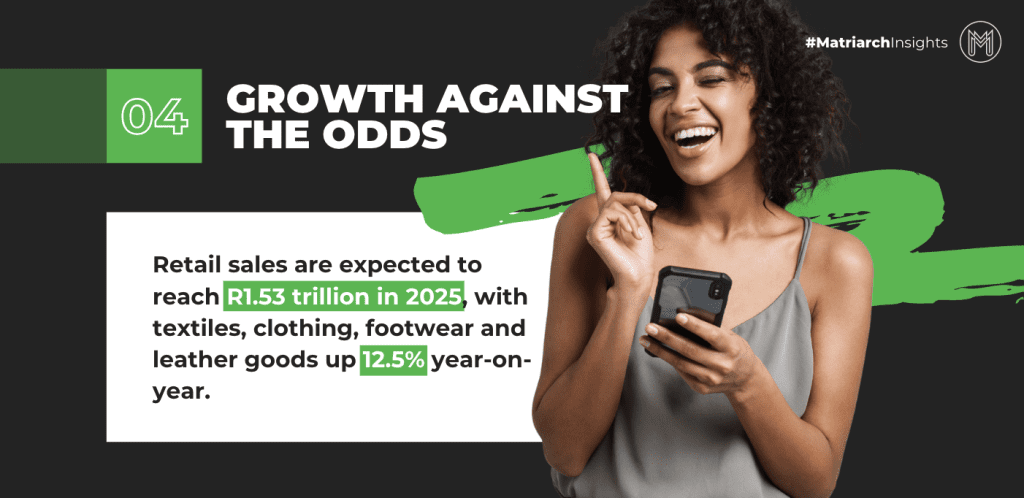
Growth Against the Odds
South Africa’s economy has faced its share of challenges, but retail is showing resilience:
- According to the Bureau of Market Research (BMR), retail sales are expected to grow by 7% in nominal terms (about 2% in real terms) in 2025, reaching R1.53 trillion.
- Stats SA reported a 4.2% increase in real retail sales in May 2025 compared with a year earlier, with textiles, clothing, footwear, and leather goods surging 12.5%.
This mix of headwinds and resilience tells a story of adaptation. South African shoppers are careful, but they’re still spending – choosing convenience, value, or premium indulgence depending on their circumstances.
What Lies Ahead
So, what does the future of shopping in South Africa look like?
- Hybrid shopping: A mix of digital convenience and in-store experience will continue to shape the sector.
- Premiumisation: Food and lifestyle retail are moving further upmarket, appealing to consumers who see value in quality.
- Global vs local: International e-commerce will keep growing, but local brands may regain ground as tariffs narrow price gaps.
- Consumer resilience: Even in tough times, South Africans are finding ways to spend where it matters.
Shopping in South Africa has never been more dynamic. From the speed of Sixty60 to the indulgence of Woolworths, from the affordability of Temu to the premium edge of SPAR Gourmet, consumers are spoilt for choice. What unites it all is a demand for better experiences – whether faster, easier, or more special.
From Online Carts to Real-World Connections
For brands, these shifts underline a powerful truth – the way South Africans shop is changing, and marketing needs to keep pace. On-demand platforms show the appetite for instant gratification. Premium retail highlights the importance of quality and curation. E-commerce growth proves that convenience and affordability remain key drivers, though tariffs may tilt the balance back toward local players.
At the same time, while many purchases are happening online, physical spaces still play a critical role. Stores and pop-ups are no longer just points of sale – they are stages for brand storytelling and consumer engagement. A shopper might discover a product during a TikTok scroll, add it to a Sixty60 basket, but still want to experience it in person before committing to repeat purchases.
This is where experiential marketing comes into its own. Shoppers want more than transactions – they want moments that feel memorable, authentic, and connected to their lives. Whether it’s an interactive campaign linked to online shopping platforms, a sampling experience at home, or a curated in-store activation, experiences bridge the gap between digital convenience and emotional connection.
At Matriarch, we believe in creating real moments with real people that deliver real results. As the retail landscape evolves, the brands that thrive will be those that don’t just follow the trends, but blend digital and physical engagement in ways that feel meaningful and lasting.

